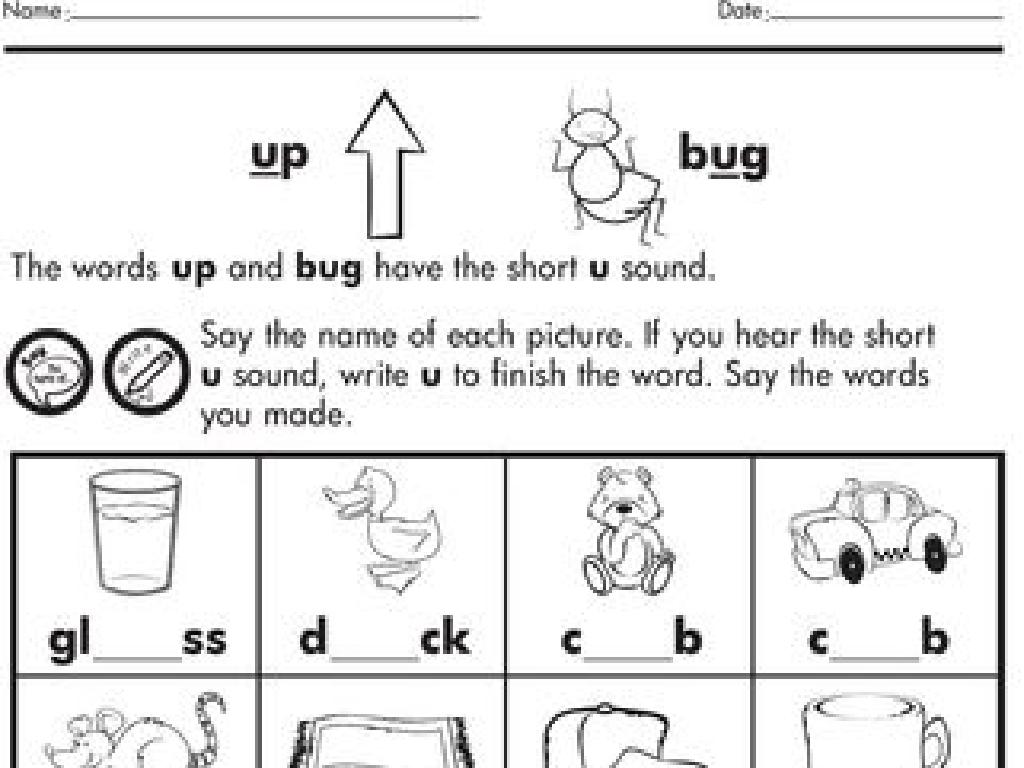Where Do Water Lilies And Saguaros Live?
Subject: Science
Grade: First grade
Topic: Plants
Please LOG IN to download the presentation. Access is available to registered users only.
View More Content
Exploring Plant Habitats
– Discovering special plants
– Observing plant pictures
– Look at the picture and describe what you see
– Learning plant habitats
– Different plants live in different places
– Water lilies and saguaros
– Water lilies live in water, saguaros in the desert
|
This slide introduces students to the diversity of plant habitats. Start by engaging students with a colorful picture of water lilies and saguaros, prompting them to describe what they see. Explain that plants live in many different environments, and some are very special because of where they grow. Water lilies thrive in ponds and lakes, while saguaros are found in the desert. This will help students understand that plants have adapted to survive in specific conditions. Encourage the children to think about what these plants might need to live in their unique habitats and how they are different from the plants they see every day.
Exploring Plant Habitats
– Plants are living things
– Like us, plants are alive and need care
– Plants need water, air, and sun
– They use roots to drink and leaves to breathe
– Plants grow in many places
– From deserts to lakes, plants adapt to their home
– Water lilies and saguaros examples
– Water lilies thrive in ponds, saguaros in deserts
|
This slide introduces the concept of plants as living organisms that require certain elements to survive, such as water, air, sunlight, and nutrients. It also touches on the diversity of plant habitats, setting the stage for discussing how different plants, like water lilies and saguaros, are adapted to their unique environments. Water lilies, for example, are suited to life in water-rich habitats, while saguaros are adapted to the dry conditions of the desert. Encourage students to think about the different places they have seen plants growing and to consider how each plant’s needs are met in its environment.
Meet the Water Lily
– Water lilies live in water
– Like a boat on a pond, their leaves stay on top!
– They have floating round leaves
– These leaves are like little green islands for frogs!
– Found in ponds and lakes
– Maybe there’s a water lily in a pond near you!
|
This slide introduces the habitat and physical characteristics of water lilies to first graders. Emphasize that water lilies are special plants that make their home in bodies of freshwater, not on land. Their leaves are uniquely adapted to float, providing a surface for small animals and adding beauty to ponds and lakes. Encourage the students to think about any local ponds or lakes they’ve visited and whether they’ve seen water lilies. You can also discuss the importance of clean water for the survival of these plants.
Meet the Saguaro Cactus
– Saguaros are desert cacti
– A cactus is a plant that lives in very dry places.
– They grow very tall with arms
– They can be as tall as a house and their arms look like they’re waving.
– Saguaros store water inside
– They can drink lots of water quickly and save it for a long time.
– Adapted to hot, dry deserts
– This helps them live where it’s very hot and rains very little.
|
This slide introduces the saguaro cactus to first graders, emphasizing its habitat, physical characteristics, and adaptations for survival. Saguaros are iconic cacti found in desert environments, particularly in the Sonoran Desert. They can grow to be quite tall and have distinctive arms that may remind students of a person waving. Their ability to store water is a crucial adaptation that allows them to thrive in arid conditions where water is scarce. Use this slide to spark a discussion about plant adaptations and how different environments affect the way plants grow. Encourage students to think about how the saguaro’s features help it to survive in the desert.
Different Homes for Plants
– Water lilies live in ponds
– They float on water with big, round leaves
– Saguaros live in deserts
– Tall cactus with arms, stores water inside
– Plants live in different places
– Think of other plants’ homes
– Like how cacti live in sand, where else can plants live?
|
This slide introduces the concept that different plants live in different environments suited to their needs. Water lilies thrive in watery environments like ponds, where they can float and get plenty of water. Saguaros, on the other hand, are adapted to the dry desert climate and can store water inside their thick bodies. Encourage the students to think about other plants they know and discuss where they might live. This activity will help them understand plant habitats and the diversity of plant life. It’s a good opportunity to introduce basic adaptation concepts and how environments can shape the way plants look and function.
Class Activity: Plant Pals
– Create mini water lily ponds
– We’ll use bowls and paper to simulate a pond environment.
– Craft paper saguaros
– Using cardboard and paint, we’ll make saguaro cacti.
– Learn plant habitats
– Understand that water lilies live in water, while saguaros live in the desert.
– Fun hands-on experience
|
This activity is designed to help first graders understand and remember the natural habitats of water lilies and saguaros through a fun and interactive craft project. For the mini ponds, provide each student with a small bowl filled with water and paper cut-outs of lilies to float on top. For the saguaros, supply cardboard cut-outs and green paint to create cactus models. As students engage in the activity, discuss the different environments these plants thrive in water lilies in ponds and lakes, and saguaros in the desert. This tactile experience reinforces the lesson and makes learning about plant habitats enjoyable. Possible variations of the activity could include adding fish stickers to the ponds, using tissue paper to add texture to the saguaros, or even planting real seeds to grow simple plants.






